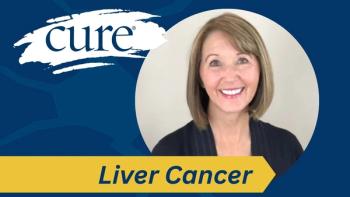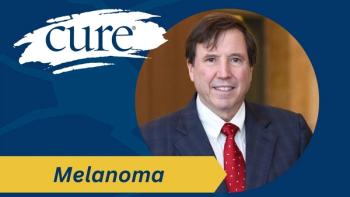
Is Immunotherapy Ready for Prime Time in Breast Cancer?
Key Takeaways
- Immunotherapy in breast cancer is still in early stages, with promising candidates in trials but not yet ready for widespread use.
- NeuVax, a HER2-derived vaccine, shows potential in adjuvant settings, with a phase 3 trial underway to assess its efficacy.
Elizabeth A. Mittendorf, associate professor of surgical oncology at The University of Texas MD Anderson Cancer Center, discusses the progress and potential of immunotherapy in breast cancer treatment.
Is immunotherapy ready for prime time in breast cancer?
Elizabeth A. Mittendorf, associate professor of surgical oncology at The University of Texas MD Anderson Cancer Center in Houston, needs only a single word to answer this question: No.
The most advanced treatment candidates are just beginning later stage trials. That said, their performance so far suggests that immunotherapy may become a powerful tool against breast cancer for those oncologists who follow the research and prepare for its arrival.
Mittendorf differentiated the main types of immunotherapy and highlighted some of the most interesting results in breast cancer trials during her presentation at the 32nd Annual Miami Breast Cancer Conference. She also discussed why different types of immunotherapy might be appropriate for different types of breast tumors at various stages of development.
"Researchers have dreamed of turning the immune system against tumors for more than half a century now, and—after decades of incremental progress—the science has reached the sort of tipping point that has produced a large number of promising compounds," Mittendorf says.
Breast cancer specialists once assumed that the relative paucity of nearby T cells limited the potential of immunotherapy in their field, so they concentrated (very effectively) on targeted treatments. Patients with breast cancer have thus had limited access to the kinds of immunotherapies that are currently available to people with melanoma or prostate cancer. But that may change.
Immunotherapy development currently tends to focus broadly on three treatment categories: chimeric antigen receptor (Car) T-cell therapies, vaccines, and checkpoint blockade strategies. Car therapies, which coat the patient's T cells to help those cells recognize tumor antigens, remain largely untested against breast cancer, so Mittendorf focused on vaccines and checkpoint inhibitors.
Vaccine Leads Field
For patients with breast cancer, the most advanced vaccine is NeuVax (nelipepimut-S). The formulation is a peptide derived from HER2 protein, combined with the immunoadjuvant granulocyte-macrophage colony-stimulating factor (GM-CSF). Patients receive it monthly for six months and then every six months thereafter for up to three years.
In a phase 1/2 trial as adjuvant therapy on 187 women with node-positive and high-risk node-negative tumors that expressed any degree of HER2, the five-year rate of disease-free survival (DFS) was 89.7 percent overall for those who received the vaccine compared with 80.2 percent for unvaccinated women. For optimally dosed patients, the DFS rate rose to 94.6 percent.
The phase 3 PRESENT trial now underway seeks to randomize 700 women with early-stage, node-positive breast cancer with low to intermediate HER2 expression to NeuVax or an active comparator composed of the GM-CSF sargramostim (Leukine). To be eligible for the trial, patients must have primary tumor stage T1-3 at initial diagnosis that was completely excised through surgery or are receiving neoadjuvant therapy before surgery.
"Vaccination takes months to produce an immune response, so it's probably not an appropriate treatment strategy for very late-stage cancers, but it appears to be particularly appropriate in an adjuvant setting," says Mittendorf, who has been leading the NeuVax trials.
"At that point, when most patients are already disease-free, harsh treatments make no sense. The tradeoff between toxicity and benefit is not in the patient's favor. Effective vaccines, on the other hand, make perfect sense because they rarely subject patients to anything worse than mild pain or itching at the injection site. NeuVax is no more grueling than a flu shot."
There is also reason to think that many vaccines will prove more effective in the adjuvant setting than they have, to date, in the advanced-disease setting. Vaccines against infectious diseases rank among the most beneficial tools created by medical science, but they have a major limitation. They're far better at prevention than treatment. In general, the more a patient already suffers from the target disease at the time of vaccination, the less a vaccine helps the patient.
"We don't know enough yet to make blanket statements about the optimal timing for different immunotherapies, but anecdotal evidence suggests that vaccines are less effective in patients with advanced metastatic cancer," Mittendorf says. "It would explain why many of the earliest vaccine trials, which enrolled patients with diffusely metastatic tumors, failed to demonstrate benefit.
"Timing, in general, is critical in oncology, and it may prove particularly important with immunotherapy," she says. "Research needs to demonstrate not only whether treatments work but when and how they work the best so that clinicians can prescribe each patient the right treatment at the right time."
Checkpoints Explored
Determining how they work best will eventually entail testing combinations of immunotherapies that, logically, should produce synergies, but testing to date has mostly involved supplementing existing standards of care with a single vaccine or, in other cases, a single checkpoint inhibitor.
Regulators have approved three such compounds to date: Yervoy (ipilimumab), Keytruda (pembrolizumab) and Opdivo (nivolumab). The first of those drugs makes it harder for tumors to call off immune attack via the cytotoxic T-lymphocyte-associated protein—(CTLA-4) pathway. The others reduce similar communication via the programmed death receptor-1 (PD-1) pathway.
At present, all three agents are approved exclusively for melanoma, but they may work against other tumors. Both of the anti-PD-1 medications are already in late-stage trials against certain lung cancers and early-stage trials against breast cancer.
A phase 1b trial of Keytruda in metastatic triple-negative breast cancer produced an overall response rate of 18.5 percent. The experimental compound MPDL3280 also produced responses in a similar patient group.
Such apparent effects may be explained, at least in part, by a finding from Mittendor's research group: 20 percent of all triple-negative breast tumors express the PD-1 ligand, PD-L1. PD-L1 expression levels are considered a potential biomarker for PD-1—targeted agents.
Given that triple-negative tumors respond so little to all existing treatments, significant progress against even 20 percent of them would be cause for celebration, but separate research suggests there are ways to increase PD-L1 expression on tumors and ways to boost the number of T cells available to attack the tumor.
"There are a lot of promising ideas for improving response rates and increasing the strength of those responses, though there is also concern that the relative lack of T-cell activity inside the breast will effectively prevent a large percentage of patients from responding to checkpoint blockade," Mittendorf says.
"Still, even if the latter idea proves right and response rates never exceed 20 percent, immunotherapy would still constitute a breakthrough in treatment. Only 20 percent of breast cancers express HER2 and nobody would call the treatments that target such tumors anything less than a breakthrough," she says.




